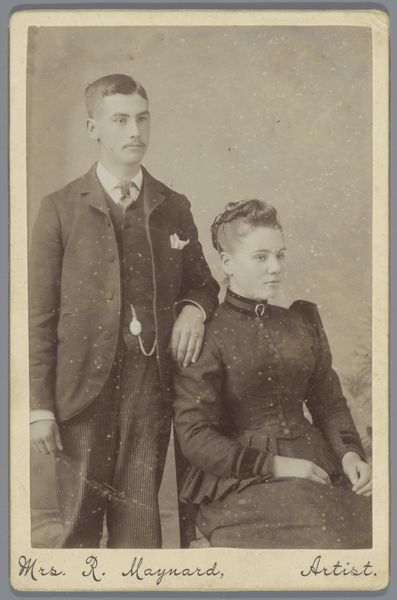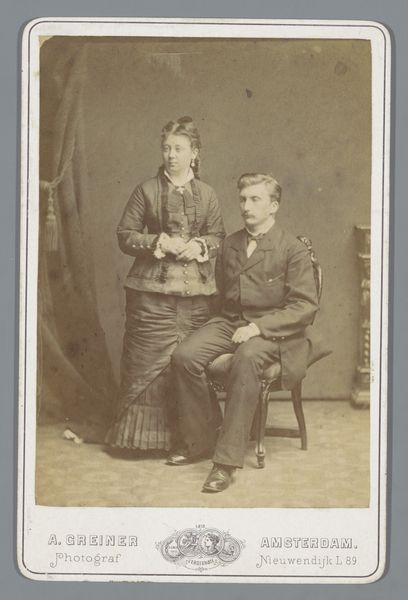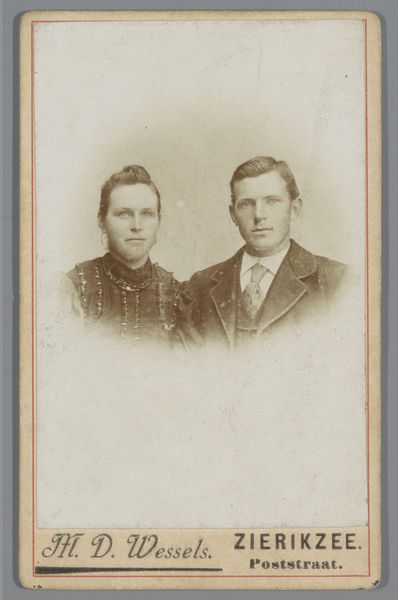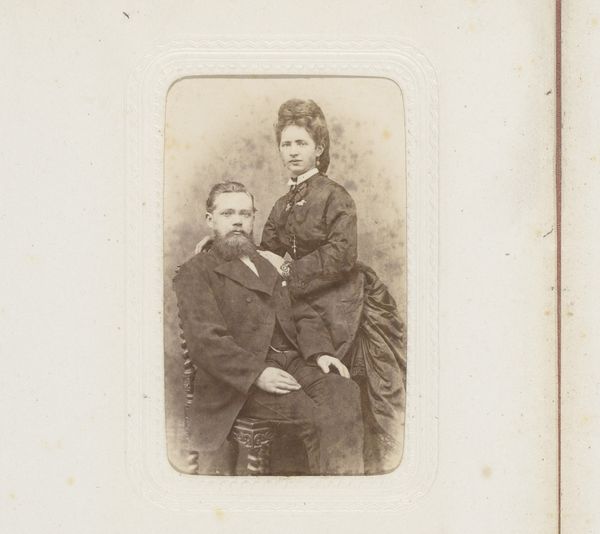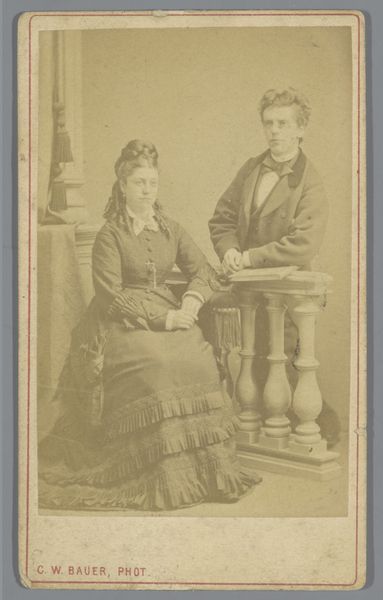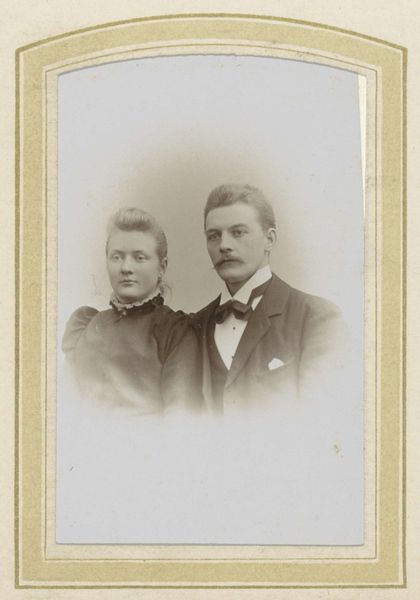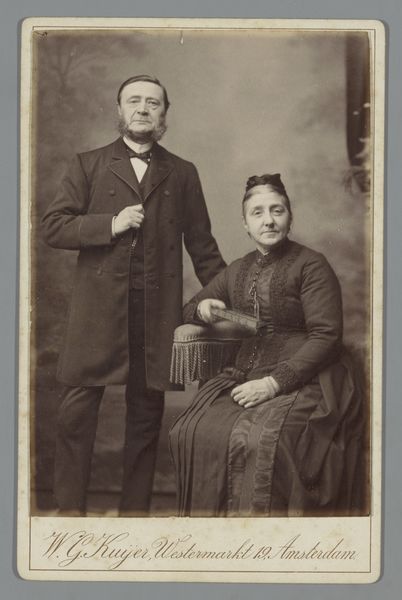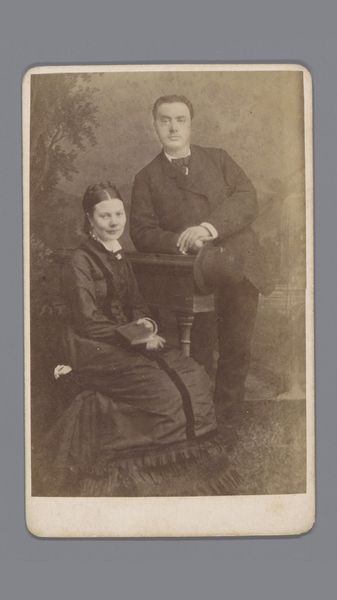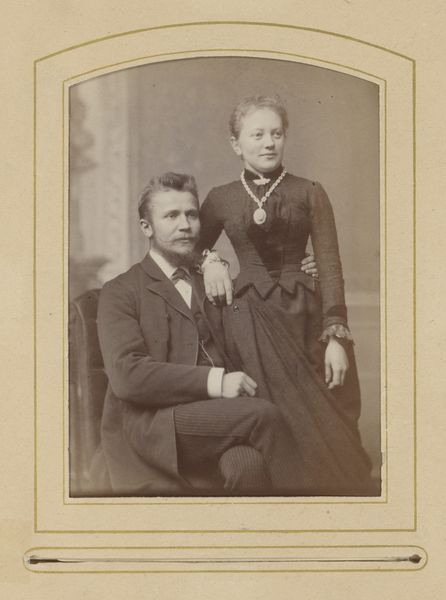
photography
#
portrait
#
photography
#
historical photography
#
19th century
Dimensions: height 105 mm, width 68 mm
Copyright: Rijks Museum: Open Domain
Curator: Let's turn our attention to this evocative piece, "Portret van een onbekende man en vrouw," created between 1883 and 1887 by Albert Greiner. The Rijksmuseum holds this compelling example of photography from the late 19th century. Editor: My first thought is how intensely present these figures feel. The detail, despite the fading sepia tones, captures a striking dignity, but also a palpable tension in their poses. Curator: Absolutely. Consider the technical demands of photography at the time. Each element of the image is so deliberately constructed, from their clothing--note the crisp tailoring of the man’s suit--to the setting, perhaps a photographer's studio with a neoclassical backdrop, suggesting a degree of crafted presentation. It's fascinating to contemplate the materials used, from the developing agents to the photographic paper itself, as markers of class and commerce. Editor: For me, it’s more about what they're *wearing* as symbols. Her cap, his formal suit – these aren't just clothes, but indicators of status, of possibly belonging to a religious community. Note her hands clasped; she holds an indistinct white item which suggests something delicate like flowers, adding to this portrait an emotional narrative or even the subtext of their marriage contract, which also reveals much. Curator: I see what you mean. These signifiers also denote material aspiration. The woman’s clothing indicates a significant outlay of material and labor—every tuck and pleat of the fabric is evidence of particular labor practices of the late nineteenth century. Also, consider the photograph itself as a new consumer item affordable to the rising middle classes during that period. The proliferation of these photos influenced notions of individual and collective identity, which became more closely tied to appearance. Editor: Their eyes tell a story as well, revealing inner strength in contrast with rigid composure in their poses. We may never know who they are. These two “anonymous” subjects now act as avatars embodying an array of personal associations and a specific moment in history—even a possible socio-political identity through clothing and custom. Curator: Indeed. Studying "Portret van een onbekende man en vrouw" offers us the chance to reconsider the processes behind representing status, while this glimpse into two individual lives tells an important and intricate story. Editor: It serves as a touching visual elegy and cultural treasure for the modern imagination.
Comments
No comments
Be the first to comment and join the conversation on the ultimate creative platform.
